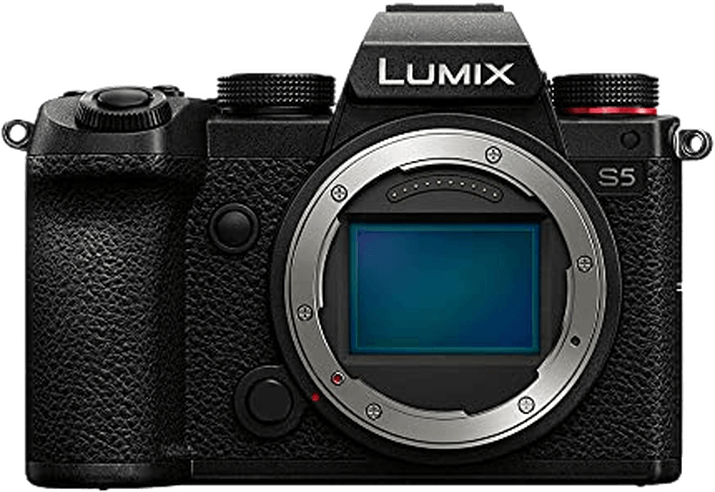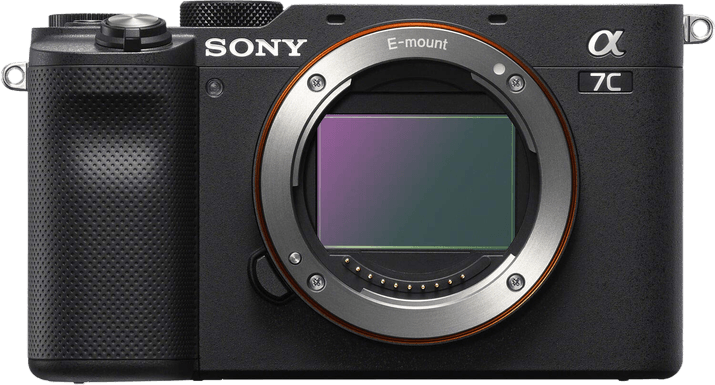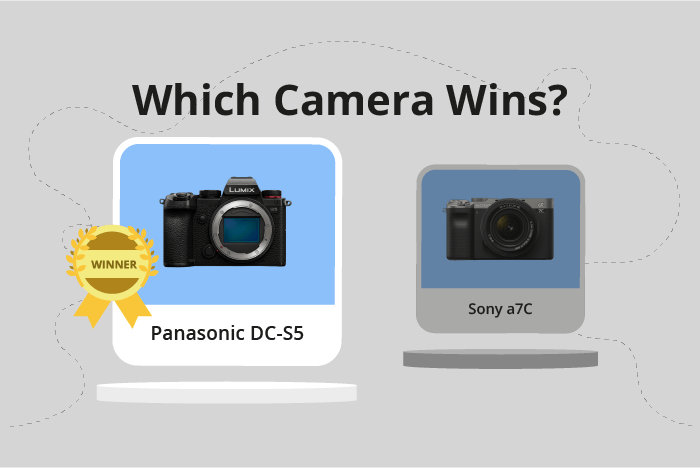Panasonic Lumix DC-S5 vs Sony a7C Comparison
Panasonic Lumix DC-S5

Sony a7C

The Panasonic Lumix DC-S5 slightly edges out the Sony a7C with a score of 79/100 compared to 78/100. Both cameras are mirrorless and were released within a year of each other, with the DC-S5 being released in 2021 and the a7C in 2020. They share similarities in their launch prices, with the DC-S5 priced at $1999 and the a7C at $1799.
The DC-S5 stands out for its larger size (133 x 97 x 82mm) and heavier weight (714g), which may offer better ergonomics and durability. On the other hand, the Sony a7C has a more compact design (124 x 71 x 60mm) and is lighter (509g), making it more portable and convenient for travel.
When comparing these two cameras, the Panasonic Lumix DC-S5 has a slight advantage in its overall score, while the Sony a7C offers a more compact and lightweight option. Both cameras have their merits, and the choice ultimately depends on the user’s preferences and needs.
Panasonic Lumix DC-S5 vs Sony a7C Overview and Optics
The Sony a7C outperforms the Panasonic Lumix DC-S5 in optics with a score of 80/100, compared to the S5’s 78/100. Both cameras share common specifications, such as 24.2 megapixels, CMOS sensor type, full-frame sensor size, and image stabilization. However, there are some differences that give each camera its unique advantages.
The Sony a7C has a faster shooting speed of 10 fps, compared to the S5’s 7 fps. This makes the a7C better for capturing fast-moving subjects and action shots. Additionally, the a7C features a Bionz X processor and a slightly higher DXOMARK sensor score of 95, compared to the S5’s Venus Engine processor and DXOMARK score of 94. These factors contribute to the a7C’s superior image quality and processing capabilities.
On the other hand, the Panasonic Lumix DC-S5 has its own strengths. The S5 uses a Leica L lens mount, which allows for a wider range of high-quality lenses to be used with the camera. This can provide more versatility in terms of lens options and creative possibilities for photographers.
In terms of optics, the Sony a7C is the better camera due to its faster shooting speed and marginally better sensor performance. However, the Panasonic Lumix DC-S5 offers greater lens compatibility with its Leica L lens mount. Ultimately, the choice between these two cameras depends on the photographer’s priorities and needs. If fast shooting speed and slightly better image quality are more important, the Sony a7C is the winner. However, if lens versatility and compatibility are of higher priority, the Panasonic Lumix DC-S5 may be the better option.
Panasonic Lumix DC-S5 vs Sony a7C Video Performance
The Panasonic Lumix DC-S5 outperforms the Sony a7C in video capabilities with a score of 83/100, while the Sony a7C scores 70/100. Both cameras share some common video specifications, including a maximum video resolution of 4K and dimensions of 3840 x 2160. Additionally, both cameras have built-in time-lapse functionality.
The Lumix DC-S5 excels due to its higher maximum video frame rate of 60fps, providing smoother and more detailed footage compared to the Sony a7C’s 30fps. This increased frame rate results in better slow-motion capabilities, making the DC-S5 a superior choice for videographers who prioritize capturing fast-moving subjects and dynamic scenes.
However, the Sony a7C is not without its merits. While it has a lower video score and half the frame rate of the Lumix DC-S5, it still offers 4K video resolution and time-lapse functionality. This makes it a suitable option for users who do not require the higher frame rate and are content with a more affordable, yet capable camera for their video needs.
When comparing the Panasonic Lumix DC-S5 and Sony a7C, it is clear that the DC-S5 has the advantage in video capabilities due to its higher frame rate. This makes it the preferred choice for those who prioritize smooth, detailed video footage. On the other hand, the Sony a7C is a viable option for users who are satisfied with 4K video resolution and time-lapse features at a lower frame rate.
Panasonic Lumix DC-S5 vs Sony a7C Features and Benefits
The Panasonic Lumix DC-S5 emerges as the winner with a feature score of 85/100, outperforming the Sony a7C, which scored 81/100. Both cameras share several features, such as a 3-inch touchscreen, flip screen, and the absence of GPS. Additionally, they both have WIFI and Bluetooth capabilities.
The Lumix DC-S5’s superiority is evident in its screen resolution, boasting 1,840,000 dots compared to the a7C’s 921,600 dots. This higher resolution provides a sharper and more detailed display, enhancing the user’s experience while framing shots and reviewing images.
On the other hand, the Sony a7C holds its ground with its compact size and lightweight design, making it more portable and easier to handle. This may appeal to photographers who prioritize convenience and portability in their camera choice.
To sum up, the Panasonic Lumix DC-S5 leads with a higher feature score, primarily due to its superior screen resolution. This ensures a better display quality, which can be crucial for photographers who want a precise and clear view of their images. Meanwhile, the Sony a7C offers an advantage in portability and compactness, catering to those who value these aspects in a camera. Ultimately, the choice between the two cameras depends on the individual’s priorities and preferences.
Panasonic Lumix DC-S5 vs Sony a7C Storage and Battery
The Panasonic Lumix DC-S5 outperforms the Sony a7C in storage and battery with a score of 71/100 compared to the Sony a7C’s 45/100. Both cameras accept SD/SDHC/SDXC (UHS-II compatible) memory cards and have USB charging capabilities.
The Lumix DC-S5 has an advantage with its two memory card slots, providing more storage options for photographers. However, the Sony a7C excels in battery life, offering 740 shots compared to the Lumix DC-S5’s 440 shots. The Lumix DC-S5 uses a DMW-BLK22 battery, while the a7C utilizes an NP-FZ100 battery.
Despite the Sony a7C’s longer battery life, the Panasonic Lumix DC-S5’s dual memory card slots and overall higher score in storage and battery make it the superior choice in this category.
Alternatives to the Panasonic Lumix DC-S5 and Sony a7C
Are you still undecided about which camera is right for you? Have a look at these popular comparisons that feature the Panasonic Lumix DC-S5 or the Sony a7C:

